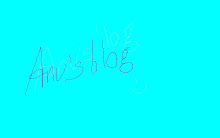components of virtual reality systems
REALITY ENGINE : Reality engines are based largely on the same components that make up a personal computer (PC), although much more computing power is required for the reality engine than is available in a standard PC. Virtual reality images are made with tiny dot like segments of a picture known as pixels, or picture elements. Each pixel itself is made up of hundreds of thousands of dots. Realistic images can be either opaque, in which all the viewer sees is the virtual world, or see-through, in which the virtual image is projected or superimposed onto the outer world.
HEAD MOUNTED DISPLAY (HMD): Head-mounted display (HMD) units use a small screen or screens (one for each eye) that are worn in a helmet or a pair glasses. Unlike a movie, where the director controls what the viewer sees, the HMD allows viewers to look at an image from various angles or change their field of view by simply moving their heads. HMD units usually employ cathode-ray tube (CRT) or liquid crystal display (LCD) technology. CRTs incorporate optic systems that reflect an image onto the viewer's eye. Although more bulky and heavy than LCD displays, CRT systems create images that have extremely high resolutions, making a scene seem that much more realistic.
civilian/commercial (medicine, video gaming, sports, etc.).
AUDIO UNITS: The audio portion of virtual reality is transmitted through small speakers placed over each ear. Audio cues may include voices, singing, thud like noises of colliding objects—in short, any sound that can be recorded. Sounds that seem to come from above, below, or either side provide audio cues that mimic how sounds are heard in the real world. Three-dimensional (or omnidirectional) sound further enhances the virtual reality experience.
GLOVES: Gloves in virtual reality allow the user to interact with the virtual world. For example, the user may pick up a virtual block, turn it over in a virtual hand, and set it on a virtual table. Wired with thin fiberoptic cables, some gloves use light-emitting diodes (LEDs) to detect the amount of light passing through the cable in relation to the movement of the hand or joint. The computer then analyzes the corresponding information and projects this moving hand into the virtual reality. Magnetic tracking systems also are used to determine where the hand is in space in relation to the virtual scene.
Subscribe to:
Comments (Atom)


